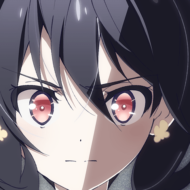The anime industry in Japan is so wonderful.
There are many wonderful works, and now there are many fans all over the world, not only in Japan.
However, even the Japanese animation industry has many problems that are not understood from overseas.
I hope that this problem will be understood and improved in order to keep the wonderful Japanese culture alive.

Issues facing the Japanese animation industry
As for the anime industry in Japan, there are several issues that creators and studios face. One of the main challenges is the issue of overworking and low pay for animators. Many animators work inhumane hours and receive very low pay, which has led to a shortage of animators and decreased quality in animation. Furthermore, the industry is heavily reliant on merchandise sales and international streaming/distribution deals, which can lead to studios prioritizing profit over creativity.
Another issue that has arisen in recent years is the controversy surrounding inappropriate behavior by industry figures, particularly towards women. There have been reports of sexual harassment and bullying in the industry, leading to calls for reform and change in the culture of the industry.
Despite these issues, the anime industry in Japan continues to be a significant and influential part of global popular culture. It has produced countless iconic and beloved series, and continues to produce new and innovative works that captivate audiences around the world.

Suggest improvements
There are several ways to improve the Japanese anime industry:
1. Address the issue of low salaries:
Since most animators and other industry workers earn low salaries, there is a lack of motivation and talent retention. By increasing salaries, the industry can attract and retain talented animators.
2. Encourage Diversity:
The Japanese anime industry’s output is often criticized for lacking diversity. By encouraging diversity in storytelling and in the creators themselves, the industry can appeal to a wider audience and increase global competitiveness.
3. Reducing Production Costs:
To stay competitive, many Japanese studios outsource adjacent services, like clean up animation, to companies located in other Southeast Asian countries like South Korea and the Philippines. Reducing production costs by embracing more efficient workflow and teams, and more automation in the creative process, while maintaining quality, would make it cheaper to produce anime and increase its accessibility to a larger audience.

4. Encourage International Expansion:
The Japanese anime industry has a strong global appeal, but there is still a lot of untapped potential. By expanding operations into other countries, the industry can reach a wider audience and increase market share.
5. Access to Funding:
Many new creators struggle to secure funding for their projects. By increasing access to funding through subsidies and grants, the industry can encourage more creators to bring their ideas to fruition.
6. Upgrade Technology:
The Japanese anime industry is still reliant on traditional methods of animation. By upgrading technologies, such as the introduction of virtual reality, the industry can offer new and exciting ways to experience anime.
Overall, if these measures are taken, it can lead to the development of stronger titles and an industry that is better equipped to engage with diverse audiences and maintain its place as a cultural cornerstone both in Japan and abroad.






























































































































